#benthic records
Explore tagged Tumblr posts
Text
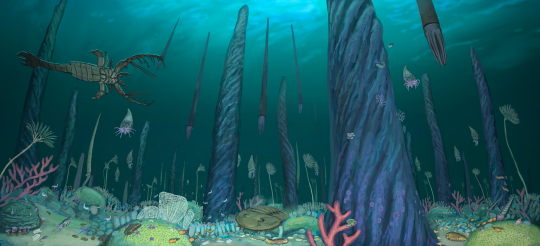
Here the result of the last formation stream of 2024. Over the course of 6 hours we explored the many organisms that inhabited the reefs of the Whitewater formation.
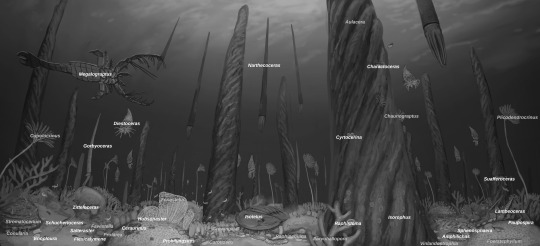
This formation preserves a rich benthic community with many sessile animals. Towering above all were the giant columnar sponges of the genus Aulacers, up to 3 m tall Ordovician skyscrapers. Between them hovered cephalopods and swam the eurypterid Megalopraptus.

Most organisms from here wer small, just a few centimeters, which is why Discord member JW made a second size chart just to bring across how the largest animals, Megalograptus and the giant trilobite Isotelus, compared to the rest.
I think something that is often overlooked in discussions about these formations is the animals we don't have. There are no crustaceans here, no jellyfish, although they probably still made up a significant part of the biomass. These animals are simply not preserved which makes our image of the Whitewater formation incomplete and biased towards the hard shelled organism. As a paleoartist one is constantly reminded of such gaps, we have to decide how much we want to speculate or borrow from other localities, or if we want to stick strictly to the fossil record.
In these formation pieces I usually do the latter but I'm painfully aware how much I miss in each piece.
Btw. since this is the last formation piece of the year I would love to hear which one was your favorite?!
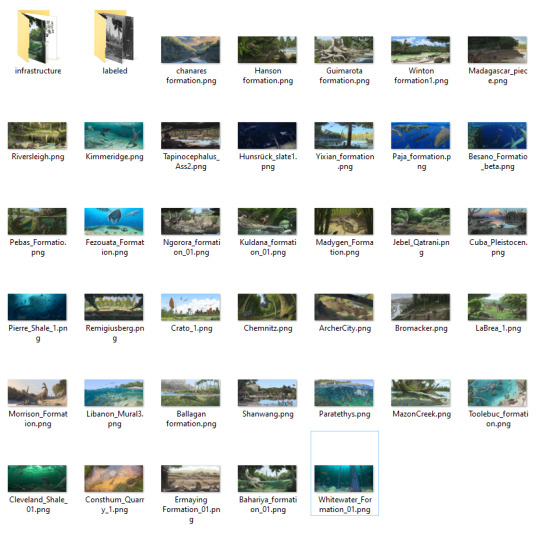
251 notes
·
View notes
Text
Fish of the Day
Today's fish of the day is the lake sturgeon!
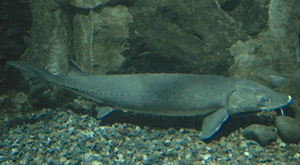
The lake sturgeon, also called the rock sturgeon, and known by scientific name Acipenser fulvescens is one of the best known North American sturgeon species! Found in and around the great lakes, and then across the Mississippi river and Erie canal. Found in 5 differing Canadian provinces and across 24 states stretching from Alabama to Michigan, and as far East as New York. These fish are benthic, spending their time along the bottom of the lake bed, but during spawning these fish will migrate thousands of miles to go back to the stream they were born in.

Like all sturgeon, they are considered living fossils, as sturgeon first appeared in the fossil record upwards of 150 million years ago, with the fish now appearing nearly identical to these ancestors. These fish can get 7 feet or longer, with most being only 4 to 6 feet in length, making them some of the largest sturgeon in North America. Their diet is made up of various invertebrates such as: larvae, small crustaceans, and worms, which they can find along the benthic lake and river beds. The 4 barbels found on these fish have taste buds, which are used to determine what is under their mouth, before they use their prehensile lips to suck up food. When food becomes scarce, these fish are known for migrating for better feeding, which happens semi frequently around the year.

The life cycle of the lake sturgeon is similar to that of most other sturgeons. They begin life as eggs laid in the location their parents were born, in fast paced river streams with lots of flat rocks. The eggs themselves are a bright yellow color, although as the eggs matures this will turn an olive and eventually brown over the course of about 2 weeks. Then they live as larvae only 10mm long, living in and around the dark underside of rocks. After this, as juveniles they will swim to lake environments, where they will spend the majority of their life cycle. These fish can live 55 years long in males and around 150 years for females, with sexual maturity being achieved at an age of around 10 years in males and 30 years in females. Breeding and spawning only happens intermittently every handful of years, and go through around 10 spawning seasons throughout their lifecycle.

For a fun fact to end on for these fish because I'm particularly fond of them, when they reach the stream they will spawn in, these fish are known to porpoise, jumping several feet into the air to end their long journey. That's the lake sturgeon everybody! Have a wonderful day!
#lake sturgeon#rock sturgeon#sturgeon#sturgeons#fish#fish of the day#fishblr#fishposting#aquatic biology#marine biology#freshwater#freshwater fish#animal facts#animal#animals#fishes#informative#education#aquatic#aquatic life#nature#river#ocean
194 notes
·
View notes
Text
Round 2 - Arthropoda - Copepoda
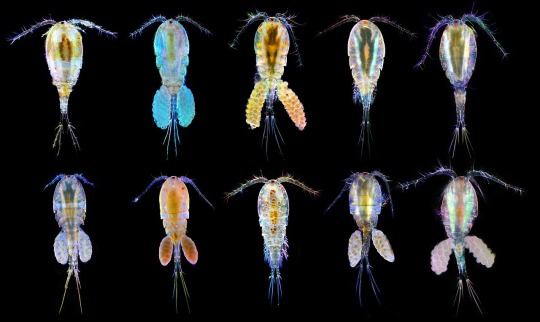


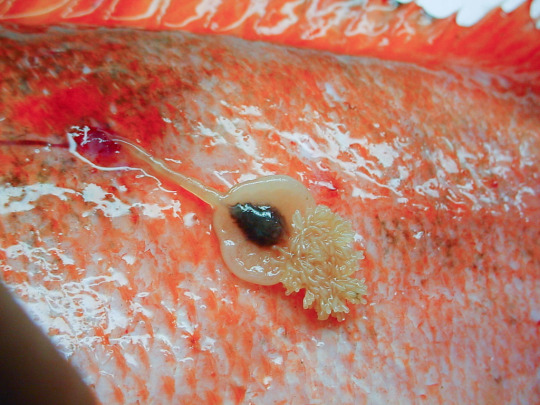
(Sources - 1, 2, 3, 4)
Copepoda is a class of small crustaceans found in nearly every freshwater and saltwater biome, including the arctic. Some are planktonic, some live in sediment (benthic), some live underground in sinkholes or caves, some are parasitic, and some even live in wet terrestrial places such as bogs and the water-filled cups of bromeliads. They are small, usually 1 to 2 mm long, with a teardrop-shaped body and two pairs of antennae. Some polar copepods can reach up to 1 cm long. Most copepods have a single compound eye, usually bright red and in the centre of their transparent head. Subterranean species may be eyeless, and a couple genera have two eyes. Free-living copepods have a head fused with the first one or two thoracic segments, with the remainder of the thorax being comprised of three to five limbed segments. The first pair of appendages are maxillipeds, limbs used for feeding. The second pair beat like oars, aiding in swimming. They have a narrow abdomen with five leg-less segments, with tail-like rami at the tip. Meanwhile, the anatomy of parasitic copepods are so widely diverse that I simply do not have space to talk about it here. Copepods have incredibly fast reflexes, due to well-developed myelin sheaths, allowing them to escape predators at high speeds, often porpoising out of the water. Like ostracods, many species also use bioluminescence as a defense mechanism, using it to distract predators (see gif below).
When they are ready to mate, some copepod females leave a trail of pheromones for males to follow. When mating, the male will grip the female with his antennae and produce an adhesive spermatophore, then transfer it to the female’s genital opening. After fertilization, the eggs will sometimes be laid directly into the water column, or, in some species, the female will carry them in a sac until they hatch. In some pond-dwelling species, the eggs can remain dormant in the case of the pond drying up, waiting to hatch until more favorable conditions are present. The larvae hatch with a head and a tail but no true thorax or abdomen. In fact, the larvae look so different from their adult forms that many of them were once thought to be different species! They will moult 5-6 times before becoming a copepodid larva which resembles the adult, sans some limbs and segments. After 5 more moults they will reach adulthood.
The oldest known fossils of copepods are from the Late Carboniferous, but due to their small size and fragility, they are rare in the fossil record. However, these fossilized copepods seemed to belong to an extant (still living) family, meaning that copepods may have already reached the forms they are in now by the Carboniferous.
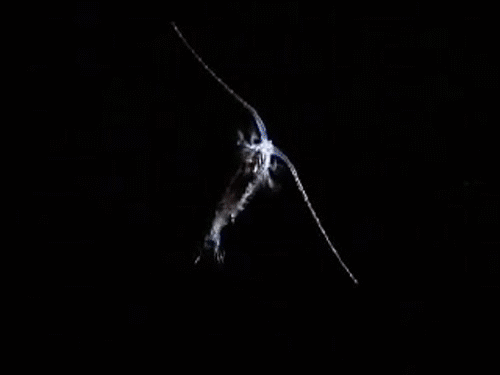
Propaganda under the cut:
Copepods are dominant members of zooplankton and are food for many species of fish. Some scientists say they form the largest animal biomass on earth, matched only by Antarctic Krill.
The surface layers of the ocean are the world’s largest carbon sink, absorbing harmful greenhouse gasses: about 2 billion tons of carbon a year, the equivalent of a third of human carbon emissions. Copepods contribute to a large part of this, feeding near the surface at night, and then carrying these gasses to deeper water with them. Their moulted exoskeletons, feces, and respiration all transfer carbon to the deep sea.
Live copepods are a popular addition to saltwater fish tanks, both as a food source for hard-to-feed fish, and as a clean-up crew.
Copepods are sometimes added to water-storage containers to control mosquitos, as some species will eat mosquito larvae. Copepods have been used successfully in Vietnam to control mosquitoes carrying dengue fever, and trials to employ this method are also underway in Thailand and the southern United States.
Sheldon J. Plankton, of “Spongebob Squarepants” fame, is a copepod!
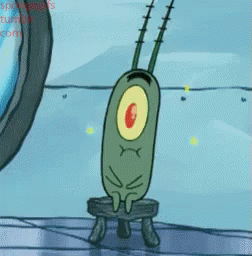
63 notes
·
View notes
Photo
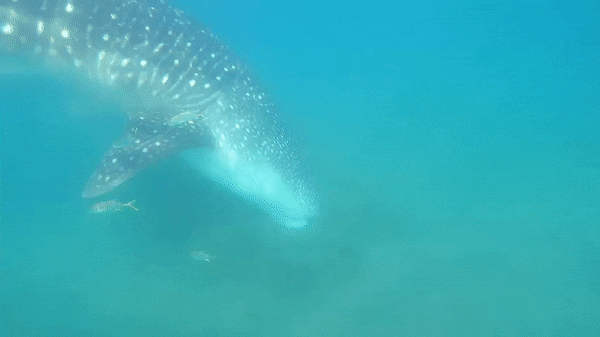
Despite being the world's largest fish, whale sharks (Rhincodon typus) are still poorly understood, and in spite of researchers though these big fishes were pasive feeders, filtering they food from the water, now researchers have found evidence of whale sharks engaging in bottom-feeding behaviours.
This event took place near La Paz, in southern Baja California, Mexico, a well know place as a whale shark hotspot, and was recorder by local guides, providing crusial information on this unknown behaviour never seen in whale sharks. Despite is still unknown what whale sharks might eat in this seafloor foraging, it is likely they feed on small benthic crustaceans.
video can seen here
Reference: Whitehead & Gayford (2023). First record of bottom‐feeding behaviour in the whale shark (Rhincodon typus). Journal of Fish Biology.
#whale shark#Rhincodon typus#shark#elasmobranch#science#marine biology#gif#sciblr#scienceblr#bioblr#biologyblr#biology#behavior
1K notes
·
View notes
Note
I have loved every episode of the Silt Verses but I'm only writing to you now because Steve Shell. STEVE SHELL. my numerous and benthic gods Steve Shell. Episode 38 was incredible, thank you so much!
Thank you for listening!
We were really thrilled and honoured to have Steve join us on the show, and I should mention that he immediately asked his recording fee to be donated to an Appalachian LGBTQ+ charity. He's a true mensch.
79 notes
·
View notes
Text



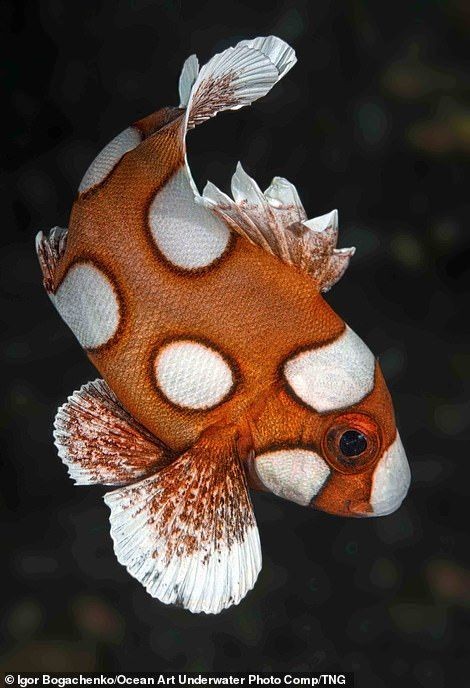
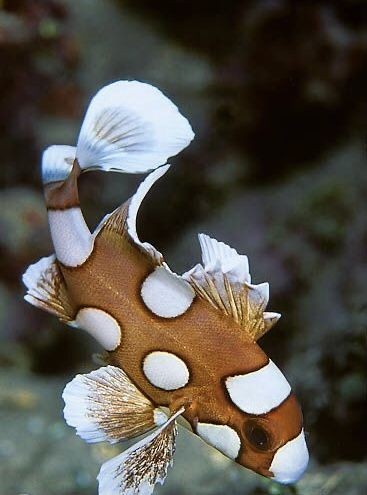
Plectorhinchus chaetodonoides, the harlequin sweetlips, clown sweetlips, spotted sweetlips or many-spotted sweetlips, is a species of marine ray-finned fish, a sweetlips belonging to the subfamily Plectorhinchinae, one of two subfamilies in the family Haemulidae, the grunts. It is native to the Indo-Pacific region. This species is of minor importance to local commercial fisheries and can be found in the aquarium trade
Plectorhinchus chaetodonoides has fleshy lips which become moderately swollen as the fish grows, there are 6 pores on the chin but no central pit.< The dorsal fin typically has 12 spines, although rarely it has 11 spines. and 18-20 soft rays, the soft rayed part of the dorsal fin has a height which is roughly equal to the length of its base. The juveniles are brownish with large, discrete creamy white blotches on the body these develop brown spotting as the fish matures. As they grow into adults the coloration slowly develops a greyish background colour broken large, dark brown spots, these spots having a greater diameter of the iris. The maximum recorded total length is 72 cm (28 in), although 60 cm (24 in) is more typical, and the maximum published weight is 7 kg (15 lb). It is thought that the juveniles are Batesian mimics of poisonous flatworms. The caudal fin of juveniles is deeply forked and has wide rounded lobes both of which are mostly white marked with a large brown spot, in adults it is much less forked.
Plectorhinchus chaetodonoides is found in coral-rich parts of clear lagoons and on seaward reefs. The adults are solitary fish, living in the vicinity of and sheltering beneath ledges or caves during the day. The juveniles are found sheltering in corals. It is a carnivorous species which preys on benthic invertebrates such as crustaceans and molluscs, as well as fishes, which it forages for during the night. The juveniles typically swim in a head down posture wildly undulating their fins as they swim, a behaviour which may mimic toxic or distasteful platyhelminths or nudibranchs and so provide some protection from predation.
#shark-blog-stuff#sea life#horrorblog78#sea creatures#strawberrycake78#beauty of nature#nature#nature is lit
20 notes
·
View notes
Text






Eunice aphroditois is a benthic bristle worm of warm marine waters. It lives mainly in the Atlantic Ocean, but can also be found in the Indo-Pacific. It ranges in length from less than 10 cm (4 in) to 3 m (10 ft). Its exoskeleton displays a wide range of colors, from black to purple and more. This species is an ambush predator; it hunts by burrowing its whole body in soft sediment on the ocean floor and waiting until its antennae detect prey. It then strikes with its sharp mandibles. It may also be found among coral reefs.
Eunice aphroditois is also known as the bobbit worm or bobbitt worm. The name is believed to be taken from the John and Lorena Bobbitt case; however, another proposed reason is due to its jaw. It is sometimes called the sand striker. Another name associated with them is trap-jaw worm. Traces of their burrows have been noted in 2021 to have been found among fossils near Taiwan dating back twenty
These ambush predators have five antennae on their head that are used to sense prey. The body is covered by a hard exoskeleton. The mandibles can be retracted inside the body and are responsible for striking and stunning prey; they are capable of snapping some prey in half. Typically, E. aphroditois ranges from deep purple to black, with an iridescent skin. The largest known specimen on record reached 299 centimeters (9.81 ft) in length, making it the longest known member of the polychaete class. Despite these great lengths, the worms are slim, with the body only about 25.5 millimeters (1.00 in) wide.
This species may be found prowling among the prey-rich environment of coral reefs, where its coloration allows it to blend in and its slim body enables it to hunt in tight places. It inhabits a wide range of other habitats, particularly sandy and muddy sediments, as well as around rocks and sponges. It has been recorded at depths of up to 95 meters (312 ft).
Eunice aphroditois senses passing prey with its antennae, seizes the prey with their mandibles, and drags it into its burrow. This species is not only considered to be a carnivore, feeding on a plethora of species of fish, but it can also be considered an herbivore/omnivore, feeding on algae, as well as a decomposer, feeding on dead and decaying matter.
To reduce predation risk, some fish engage in mobbing behavior, during which a group of fish will direct jets of water into the worm's burrow to disorient it.
Ancestral species may have exhibited the same hunting behavior 20 million years ago, according to fossil-records.
#deathmothblog#beauty of nature#nature#wildlife#animals#sea creatures#sea life#artists on tumblr#bobbit worm
12 notes
·
View notes
Text
'Off-key
sometimes my scars sing louder then stars the echoing thrum of my bones reaching from primordial dreams of pre birth to the apex of cosmic tissue who am I? a record? a stone tablet hastily scrawled in blood? a scrap of Akashic page discordant crumpled & torn found in the crevice of a lost couch all described in the single word "S U F F E R I N G"? It sings to me my scars, a dirge befitting a hangedman, to be played before his execution but only just the mind is a primordial ocean swimming with predators all different but all the same all connected through appetite. The dreams of a Benthic Zone of hell noxious and biting and induced with sweet sensation of the toxic cloud of "what ifs" & whale song i am alive but i often wish i wasnt. i want to be loved but so often i am denied. to be wanted, desired, to know the all encompassing gaze of a lover as she stares at you the way one would stare into the singularity of black hole. empty, yet eternally full. enrapturing, addictive, in awe of how easily it could destroy you but excited for the possibilities all the same and yet i exist all the same my scars sing louder then stars and i wish to walk beside someone to hum along with me to the tune
4 notes
·
View notes
Text
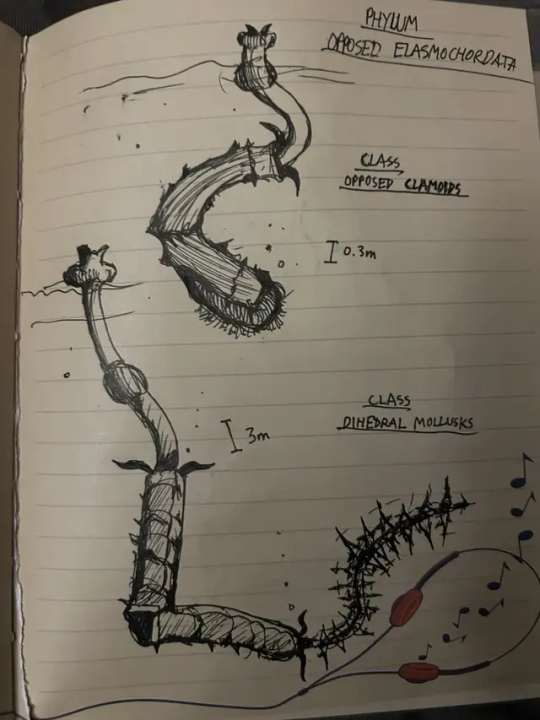

Fifth Phylum !!111! Opposed Elasmochordata STILL in Superphylum Near Bilateral !!
PHYLUM OPPOSED ELASMOCHORDATA
Phylum containing a bidirectional, plated, segmented nerve column and an exoskeleton of calcium carbonate.
(AN1 A2-c) Clade: Chamatae
A clade of opposed elasmochordates that contain a calcium carbonate shell, respirate with an active muscle valve, and locomote via ciliary or muscular valve locomotion.
Class Opposed Clamoids
Class of chamatae that consume organisms through a baleen-analagous filter located on one of the valve ends of the opposition.
Class Dihedral Mollusks
Class of chamatae that consume organisms with an extending tooth-barbed muscle located on one of the valve ends of the opposition.
(AN1 A2-d) Clade: Findopseudopescadae
A clade of opposed elasmochordates that contain an enamel shell, an interior support structure of hyaline cartilage, respirate with pseudo-gill structures, and locomote via water jet excretion or rotation.
Class Walking Steeples
Class of findopseudopescadae that have a semi-flexible exoskeleton, 3-4 long and rigid appendages, a central dorsal node head lined with sensing pili, and are completely benthic.
Class Bifin Aquatics
Class of findopseudopescadae that have a flexible outer shell, 2 ends ending in forked or lunate fins, and use labriform locomotion to swim in pelagic environments.
You may have noticed two things with these guys ! First of all, they are split down the middle! The head end of the nerve column ends at two tails ends as opposed to one. This allows for both enhanced growth and sensing, a splitting and managing of different tasks (most observable on the opposed clamoids and dihedral mollusks) and also redundancy in the event of a predator attack! These guys are also "elasmochordata", which means their nerve chord is segmented into many plates that can be bent and stretched, acting as both a "spine" and a "nerve cord" that can be separated into different functions (similar to how each vertebrae of a mammal can control different body systems)
The second thing you may have noticed is that there are quite a lot of phyla ending in "cord" or "chordata", while on Earth Chordates are just ONE phylum. Well, on Jom'Gol, these different creatures have had a longer period of time to differentiate and speciate-- they are already distinct enough on phylogenetic records. However, the physical differences are very unique as well ! Each type of "nerve cord" has a different time, material, shape, growing structure, and placement that it develops in during the embryo-- and although some creatures may look similar, even an inspection of the spinal cord both during adulthood will show wildly different shapes between phyla!
#art#digital art#artists on tumblr#worldbuilding#jomgol#spec bio#spec evo#speculative biology#speculative evolution#speculative zoology#speculative worldbuilding#creature design#creature
12 notes
·
View notes
Text
These are some of my favorite, less well known, non-malacostracan crustaceans!
Mystacocarids
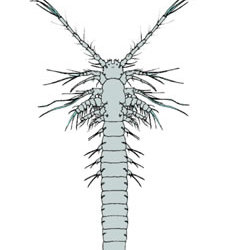
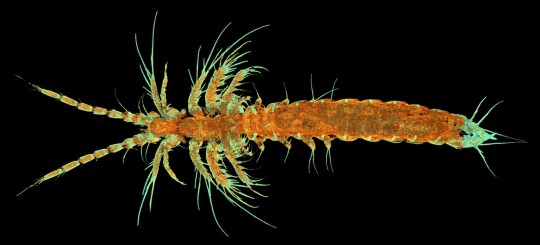
They are usually placed in a group with Ostracods, that is basal to all other extant crustaceans, meaning crabs, barnacles, and bees are all more closely related to each other than they are too Mystacocarids. They live in between grains of sand on beaches in many parts of the world. They get up to 1 millimeter long. I like how they kinda look like feather dusters, or like stretched out lice with too many legs.
Cephalocarids or Horseshoe shrimp
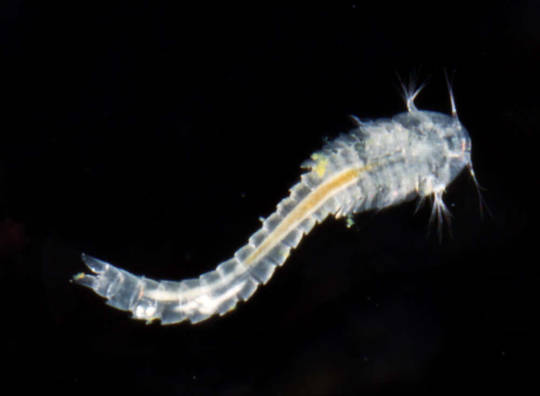
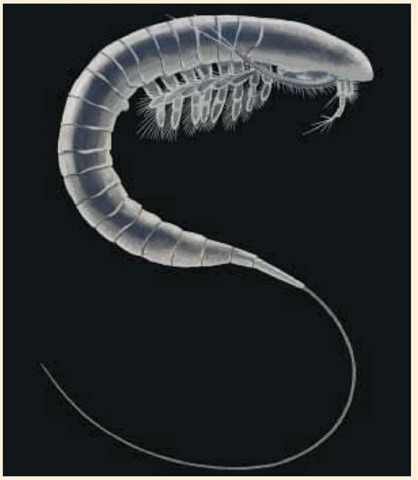
These guys were only discovered in the 1950s century and since then have been grouped with the remipedes, although recently they typically are instead placed in their own group! They are benthic organisms that live in all kinds of sediment from the shore to the deep sea, and typically eat detritus. They are hermaphroditic, have no eyes , and get up to 4 mm long! I think they look a lot like some primitive, Cambrian era arthropods, and despite being small and probably not likely to fossilize, their fossil record extends back to Ordovician, so the appellation of them being "Cambrian survivors" may very well be accurate.
Notostracans or Tadpole Shrimp
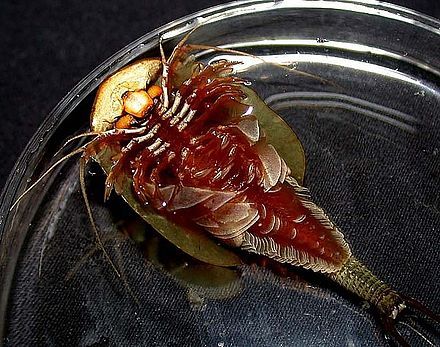

Consisting of the genera Triops and Lepidurus, this group of animals is most closely related to water fleas and clam shrimp , and more distantly to fairy shrimp (such as the famous sea monkey brine shrimp). Like brine shrimp, Triops are a common pet. Both genera are known to have populations in temporary pools of water, and have long lasting eggs that can survive desiccation and years without water before hatching again when the water returns. They also can live in shallow lakes, certain wetlands, and other more permanent ponds, and depending on species live in fresh, brackish or even salt lakes, but don't live in marine environments. They are omnivores and will basically eat anything, including smaller members of their own species. For a relatively small group of crustaceans, they have a wide variety of reproductive strategies, with some populations having sexually reproducing males and females, some having exclusively self fertilizing females, others being primarily hermaphroditic, and still others being different mixes of these. This variation is present even in different populations of the same species. They can get up to about 7 cm long , making them much larger than the previously mentioned crustaceans, but not big enough! They are so cute I wish they were big enough I could give them hugs. I think they should be the size of cats .
Remipedes
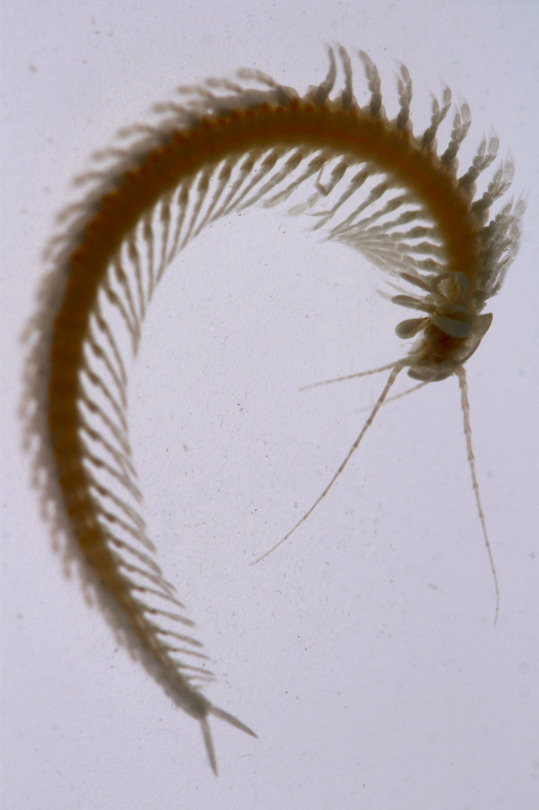

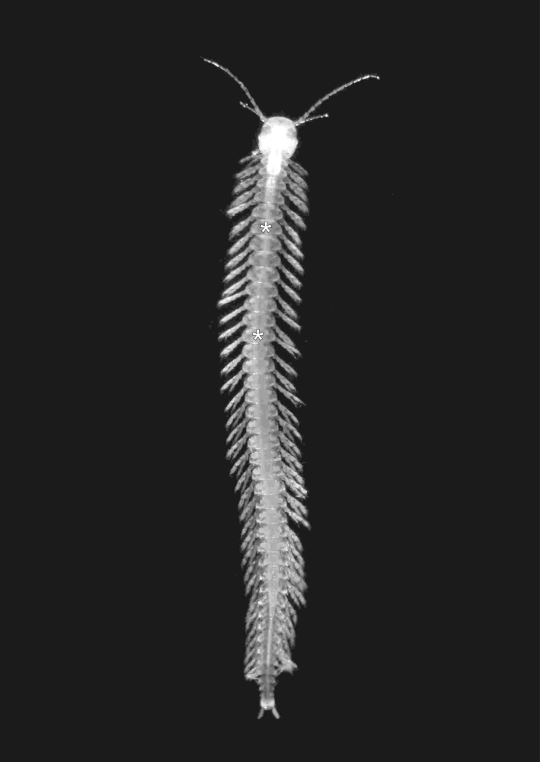
Remipedes are really special, the first living remipedes were only discovered in the late 1970s, and weren't properly described until 1981, meaning our knowledge of living remipedes is only as old as goth music. To be honest their lifestyle is pretty goth too, they exclusively live in caves and aquifers, typically in subtropical , coastal regions. As befitting creatures of the dark, they have no eyes or pigmentation, and instead have an advanced sense of smell. While they are also capable of filter feeding, they have venomous fangs that they use to predate on smaller organisms, and indeed are the only venomous crustaceans (outside of insects). Unlike the predatory adults, remipede larva don't seem to eat at all, and it's speculated that they may instead derive nutrition from symbiotic bacteria. Remipedes have 32 segments, and being hermaphroditic, have female and male openings on different segments of their bodies (7 and 14, respectively) . Despite their seemingly primitive bodies and strange lifestyle, remipedes have actually been discovered to be the group of crustaceans that are closest to the Hexapods, including the insects! They get up 4 cm long but I wish they were as long as eels.
I also kinda wanted to write about clam shrimp here but their phylogeny is a bit of a mess right now and I'm not even sure what qualifies as a clam shrimp anymore. They basically look like little clam shells with a crustacean swimming around in them.
19 notes
·
View notes
Text
Oh huh. Well, what's interesting is looking at the depth chart in merch and promo material, the entire second half of tpwbyt is labelled with depths that are squarely in the Hadopelagic/Hadal zone, which is for depths found I believe exclusively in oceanic trenches (>6000m), and even then less than 50 locations worldwide have been officially noted to go that deep. The final song is at depths only recorded in Challenger Deep, part of the Mariana Trench, which is actually in the Pacific Ocean and not the Atlantic but w/e, we'll ignore that for the sake of artistic liberty.
Anyways, a fun fact that's kind of interesting to mull over and I think actually meaningful, even if on an easter egg level, is that Missing Limbs, at 10924m, is simultaneously believed to be the deepest point reached by any manned deep sea vessel (The Limiting Factor, crewed by Victor Vescovo in 2019) as well as what several studies had concluded (at the point during which the album was likely written) to be the deepest observable point of Challenger Deep in its entirety. Depth accuracy is so hard to determine because of the conditions and topography of the location that the estimated numbers you find in different articles on the same subject will fluctuate by a few meters in either direction, but that number is what comes up the most frequently in the summaries and conclusions. Technically that also makes it a song at the Benthic level, which is cool and gives me song crossover ideas but that's a different post.
A large percentage of sediment's composition at that depth is the skeletal remains of plankton and similar organisms. The atmospheric pressure at that depth is roughly 600x the standard atmospheric pressure. The water constantly hovers at just above freezing temperatures. Taking Missing Limbs and putting that song in the context of the absolutely brutal conditions of that environment, the picture of Vessel having sunk all the way down to the absolute lowest point on the planet's surface in general, is really evocative and also, ow my heart! Equally brutal and heartbreaking imagery.
That zone's associated songs beginning with Alkaline is also interesting but I'm not going to look too heavily into that. I'm actually really curious about the other depth measurements now, though. I'd imagine this particular song is the one most likely to have an actual meaning compared to the others, but it's a fun exercise and a good excuse to read more about the deep sea. The choice to begin with Atlantic already near the bottom of the Mesopelagic zone especially is ??? but I haven't given that a look yet.
#sleep token#actually we have studied the hadal zone less than we have the moon and mars bc the extreme conditions found there. also v little funding.#anyways bye i'm gonna read some articles about the hadal zone now! autism activated i love the ocean so much <3#i'll come back to the others later but they'll probs be untagged unless they're very compelling
24 notes
·
View notes
Text
Fish of the Day
Today's fish of the day is the European eel!

The European eel, known by scientific name Anguilla anguilla, is a common eel within Europe. Found within, (shocker) Europe and western Asia, this eel has a range focused around the Northern Atlantic ocean stretching from The Eastern United States to Western Europe and North Western Africa. This includes populations within the Caspian, Black, Mediterranean, North, Norwegian, Barents, and Kara seas, but there is a special emphasis on the populations within the Sargasso sea nearby Florida, as this is where they migrate for breeding purposes. They can live within most habitats worldwide, as they thrive in both freshwater and marine environments, along with a temperature range from temperate to subtropical. Primarily benthic, like most eels they live their lives along the sea bed, hiding in vegetation during the day, and hunting during the dark of night.

The diet of the European eel consists of benthic organisms: primarily mollusks, crustaceans, and small fish, although there have been records of them eating one another if the chance arrives. This benthic lifestyle is essential to the survival of the eels, as they are regularly predated on by large water birds, marine mammals, and of course, humans. Human hunting of these eels is incredibly popular across Europe, with the eels being used in dozens of regional dishes. The European eel in fact makes up almost 44% of eel sales into the United States, and there's a vast market of illegal eel hunting and farming within Europe and Asian countries to support demand. Farming is inefficient for production of these eels, leaving humanity with a thousand year old question on how the European eel breeds, after centuries of no success artificially. Completely blocking the market into catching live, wild eels for consumption. This is one of the reasons for the endangered status of an animal that once made up as much as 50% of all fish biomass in some freshwater systems of Europe. Today however, these eels have been vanishing from all of their natural environments, leaving a panic as to if total extinction is on the horizon.

During our time as an animal hunting the European eel, we have been left with a question that has evaded us for centuries: how does the eel breed? Discovered in 2022, humanity finally has our answer. The European eel has a life made up of a cycle of metamorphoses. After hatching from their eggs, they will live as larvae for up to 300 days, where they will float on the gulf stream to Northern Africa, before going through their first metamorphosis. After the larval stage, the eel will live out around a year as a young state referred to as a glass eel. Named for their transparents state, these eels are camouflaged like this, as this is when they begin their swim back to coastal or freshwater homes. Despite being almost entirely invisible to the human eye, this is when they are most predated on, and only around 1 per 500 eels born in a year will make it into their freshwater or coastal homes.

Most eels who are caught for farming purposes are caught in this stage, primarily as they enter into well known freshwater territories and are bottle-necked into a small area all at once. However, if the eel is uncaught, it will go through a second changing into an elver, which is the name for a small version of the adult eels. After this isn't another metamorphosis, but rather them gaining color for the first time, becoming yellow eels, it will live like this for anywhere from 5-20 years, slowly growing larger with time. Once these eels have reached a sufficient mass, they will finally sexually mature. The eyes grow larger, these eels will begin releasing a steroid to allow more energy for migration, and they become a silver reflective color that is hard to spot underwater. This is the last part of the life cycle of eels, referred to as silvering.

Migration of the European eel has been a mystery since the time of Aristotle. The silver color makes them hard to track, and there is no record of a silver eel ever being caught within its migration pathway, leaving us blindsided to how and where they might breed. However, in 2022 with the help of the ARGOS system, which is a series of tagging GPS systems, attached to silver eels before they make their way into the ocean. With this confirmation, the mystery of eel reproduction has finally been solved, telling us that the European eel travels anywhere between 2500-6,500km to breed in the Sargasso sea, just East of Florida. These eels would swim anywhere between 2.9-11.9km a day, and have a journey that lasts anywhere from 180 days, to 400, oftentimes completely missing the ongoing breeding season, to make it to the next one. This has confirmed to us that they travel slower than they need to, ensuring that they are not caught or predated on before spawning. Once in the Sargasso sea, these eels will begin the spawning season in December, peaking in February/March and then ending in late May. Females will carry up to 3,000 eggs with her, and spawning is done is masses, with eggs released and fertilized before the adult eels pass away, leaving only the fertilized eggs behind to survive them.

That's the European eel, have a wonderful day, everybody!
#fish#fish of the day#fishblr#fishposting#aquatic biology#marine biology#freshwater#freshwater fish#animal facts#animal#animals#fishes#informative#education#aquatic#aquatic life#nature#river#ocean#eel#european eel
51 notes
·
View notes
Text
A Serendipitous Encounter pt 2
୨⎯✎✎⎯୧
part 1
OC intros
POV: Thomas
୨⎯✎✎⎯୧
TWs:
⇾ none!
୨⎯✎���⎯୧
Just as he expected, nearly the entire table quickly followed suit with a desperation that clearly outweighed their views on conduction of status. The mystery person looked around in bewilderment, while the politician herself seemed to fall under a sense of relief. That would not do.
“Good show, my dear!” Thomas congratulated, the sounds of mirth rapidly quieting to allow his voice to be heard. “I applaud you, for being unafraid to accuse injustice regardless of status or circumstance. Blackmail for the sake of power is a truly detestable measure, and I cannot help but feel ashamed of my acquaintanceship with this woman.”
“Ah, y- yes, his candor and intelligence is what allowed me to view the merit of his character, and I simply had to invite him.” The host stood, wine in hand, swiftly if sloppily taking advantage of Thomas’ seizing of the situation. “Everyone, this is Atlas, the Esoteric Correspondent. You might know him from his lectures over at Benthic University, or from his published works as a candidate for the position of Imperial Artist In Residence for the Empress’ very Court. He is also an investigator of sorts, and therefore finds himself coming to obscure conclusions no average person could attain. Truths about people that they would prefer to keep in the shadows. Be sure to have a clean record when associating with him.”
The table chortled politely.
The false smile had long since dropped from the politician’s expression. The new guest— Atlas, an accomplished and intelligent artist and academic, apparently— gazed at Thomas in undisguised wonderment, and the man experienced a stirring within himself. He dissembled his own fascination with a lighthearted wink, and the person quickly averted his captivating eyes. Was that a hint of a deeper color atop his high cheekbones?
It was then the chef decided to send out the first course, before coming to the table himself to ask the diners of priority their opinions— the host and his family; a few politicians; Thomas himself.
The repast began on an odd note, although the awkwardness was shortly dispelled by light discussion held quietly over the ambiance of tinkling cutlery. Not a single person so much as made eye contact with the accused politician, and Atlas seemed to have attracted the curious scrutiny of nearly everyone. Thomas, however, was the only one with whom he traded frequent glances and the occasional daring smile.
The seven courses passed without incident, and the accused politician disappeared at some point between dessert and the emergence of the string quartet. Thomas found himself in the familiar position of being wrapped in various interactions, indulging in his habit of flitting about the crowd like a mutable butterfly and allowing himself to be drawn to groups by the call of his name— or rather, his title. Few bothered to familiarize themselves with anything further than ‘Acclaimed Beauty’. As the evening went on, the man’s mind refused to cease pondering Atlas, constantly twisting around itself to return to him like an artist to a muse.
Thomas’ eyes roved the crowd, almost instantly picking out the object of his allurement amongst a fair-sized throng of intrigued aristocrats. The academic was clearly out of his element, attention darting to and fro as he attempted to manage what seemed to be multiple separate discussions. Even at a distance Thomas observed how the person’s breath seemed to stutter ever so slightly, how his motions of emphasis bordered on fidgets of distress. The man once again sensed a peculiar fluttering that was rapidly becoming familiar, and he could not help but seek to aid the enticing character.
The moment he found himself free, the man made his expeditious way over. Utilizing the precedence of his standing, Thomas took the rather direct liberty of breaking through the invisible barrier between the crowding socialites and Atlas’ lone form to take the person’s silk-covered hand in both of his own. Atlas froze.
“Excuse me Atlas, but I could not help but be captivated by our lovely host’s words about you, and was hoping to discuss your pursuits. Shall we retire to the parlor for a better chance at easier dialogue?” Thomas did his best at making his expression as transparent and benevolent as possible, meaningfully flicking his gaze from the crowd back to the person before him.
“I..” Atlas’ eyes shifted between the bewitched faces of his now-silent congregation, and he cleared his throat. “Yes, I would be honored to discuss my work with you.”
Thomas nodded and, keeping Atlas’ hand held within one of his, drew the academic from the cadre and led him on a winding path through the hall. A number of minglers seemed to desire to speak with them, but the sight of the pair moving hand-in-hand with purpose dispelled them with efficiency.
They eventually made it to the parlor entrance, Thomas pushing through the heavy curtains into a low, more modest room, populated by a scant number of couples in quiet conversation by the light of the fireplace. The space was hazy with cigar smoke and dim with uneven light, giving the opposite feel of the host’s grand hall. Thomas led Atlas to an empty divan, and pulled him down to sit with delicacy.
[2/3]
୨⎯✎✎⎯୧
#character: atlas#character: thomas#atlas x thomas#writeblr#oc posting#fallen london#fallen london oc#fallen london writing
3 notes
·
View notes
Text
Lancetes
Massive, powerful, and mysterious, the Lancetes are fully aquatic marine Mollichordates, existing as filter-feeders and swift predators. They have streamlined bodies with muscular tails and feet modified into flippers, making them perfectly adapted to life in the open ocean. They are also one of the only Mollichordates to give birth to live young.
Spinners

Pictured: the keeled spinner, native to the extensive continental shelf of southern Faon.
Dwelling in shallow, warm waters, these creatures are named for their habit of leaping out of the water and spinning rapidly. It is believed to either be a way to rid themselves of parasites, communication between individuals or just done for fun. Although social, they live in much smaller groups than their cousins the Torpedo whales. Feeding primarily on benthic animals and small Itchyomorphs, they stick to coastal areas and only rarely venture beyond the continental shelves. They are also occasionally found in estuaries.
Torpedo Whales

Pictured: the dusky torpedo whale, which spans a wide territory between the Kana Islands and southern Axane.
These fast, intelligent, social animals live in the open oceans, feeding on Itchymorphs, aquatic Hexapods, and even small Acualata species. They are found primarily in the southern hemisphere but a few populations extend northward. These creatures include one of the fastest recorded marine animals, the dusky torpedo whale, achieving bursts of speed in excess of 70 mph. Although the dusky is relatively small, some torpedo whale species can grow up to 45 feet long!
Harpooners

Pictured: the knife-fin Harpooner, common in the Xraa Sea.
The ironically named Harpooners are larger on average than the Spinners and the Torpedo Whales, and live in packs that patrol the open ocean searching for Gilled Whales. Working as a team they use their long, serrated proboscis to stab at the much larger whale until enough digestive enzymes have been injected to begin to dissolve the whale’s flesh, alive or dead. They will then begin to feed. Although their preferred prey is large, meaty Gilled Whales, they will also eat smaller Lancetes, Itchyomorphs, and pelagic paddle-snakes. Several populations in the north also specialize in eating Remmanites.
Gilled Whales

Pictured: the red-gilled whale, the largest animal on Varin, migrates up and down the western coast of Ejoa seasonally.
These huge filter-feeders live in seas worldwide, sometimes solitary and sometimes in large pods. The “gills” are not really gills, but rather slits in their mouthparts lined with bristles to catch plankton as they swim through the water with their siphons agape. These incredibly unique creatures have a feeding method never before seen in Aconchs, as the proboscis has evolved into a smaller structure within the mouth, used to digest food internally once it’s been sucked into their siphon. Due to the specialized nature and large size of the siphon, it cannot be retracted into the body, but can be closed and tucked beneath their face to reduce drag if they need to swim quickly.
5 notes
·
View notes
Text
There is something quite eyecatchng, despite their lack of gaudiness, about silvery, schooling fishes. Though they are less common in our tanks than more colorful species, some well known species are popular, including the piranhas called silver dollars, and the carps called tinfoil barbs. A less popular member of this category, would be the moonfish, Citharinus citharus, which is usually categorized as a riverine fish usually categorized as native to the zone south of the Sahara. This is not the most popular source for fish imports, so C. citharus is quite a rarity in the aquarium, despite their abundance in African rivers. But in parts of West Africa their rage does extend further south, and they do extend eastwards, with records from such lakes as Albert and Turkana. The eastern fishes are often regarded as a separate race of the species
This is quite a large fish as it grows potentially to 58 centimeters, or about 23 inches. Ecologically it's niche is as a planktivore and a grazer of biofilms, and it has been compared to unrelated fishes inhabiting the freshwaters of other continents. Taxonomically, they are the namesakes of the grouping called the citharinoids, which are an important group of African freshwater endemic fauna. Traditionally the cutharinoids are regarded as a side branch to the mainline of Afro-American tetra (or characiform) radiation; more recently, molecular data has cald this into question, although it remains important that the morphology of citharinoids still suggests their close kinship with the 'true' tetras, and this remains the scientific concebsus.
C. citharus are schooling fishes that must be kept in groups, with spatial provision to cruise and shoal unobstructed. Towards other fish species, they are very peaceful, and very appropriate for mixed species communities. Their tolerances of chemical parameters are probably quite wide, eng present both in localities, such as the White Nile, where the pH of the water exceeds 8, and others such as in Nigeria, where it may drop below 6.5. Wild C. citharus appear to favor waters where the temperature is a little warmer than is the average tropical tank, so circumneutral pH and a temperature of about 27 degrees centigrade, are probably fine when caring for all C. citharus. This fish is quite a habitat generalist within rivers, and is sometimes recorded from lakes also, but everywhere, the species favors life in deep, wide water bodies. Therefore the aquascape is of limited importance, other than opportunity to cruise, school together and forage.
C. citharus are quite omnivorous overall. Their main diet is algal, yet they also ingest insect, fish, annelids, zooplankton, and plant roots during the course of their feeding behaviors. Juvenile and adult C. citharus are known to consume the same food items They are well categorized as aufwuchs and plankton eaters, but it might also be added that they ingest detritus as well, at least incidentally during their benthic foraging activities. Because they naturally swallow sand and mud, it is better that their aquarium substrate be as fine grained as humanly possible. Food items should ideally be small, and any algal or other vegetable component should forn a significant proportion of their feed.
0 notes
Text





Plectorhinchus chaetodonoides, the harlequin sweetlips, clown sweetlips, spotted sweetlips or many-spotted sweetlips, is a species of marine ray-finned fish, a sweetlips belonging to the subfamily Plectorhinchinae, one of two subfamilies in the family Haemulidae, the grunts. It is native to the Indo-Pacific region. This species is of minor importance to local commercial fisheries and can be found in the aquarium trade
Plectorhinchus chaetodonoides has fleshy lips which become moderately swollen as the fish grows, there are 6 pores on the chin but no central pit.< The dorsal fin typically has 12 spines, although rarely it has 11 spines. and 18-20 soft rays, the soft rayed part of the dorsal fin has a height which is roughly equal to the length of its base. The juveniles are brownish with large, discrete creamy white blotches on the body these develop brown spotting as the fish matures. As they grow into adults the coloration slowly develops a greyish background colour broken large, dark brown spots, these spots having a greater diameter of the iris. The maximum recorded total length is 72 cm (28 in), although 60 cm (24 in) is more typical, and the maximum published weight is 7 kg (15 lb). It is thought that the juveniles are Batesian mimics of poisonous flatworms. The caudal fin of juveniles is deeply forked and has wide rounded lobes both of which are mostly white marked with a large brown spot, in adults it is much less forked.
Plectorhinchus chaetodonoides is found in coral-rich parts of clear lagoons and on seaward reefs. The adults are solitary fish, living in the vicinity of and sheltering beneath ledges or caves during the day. The juveniles are found sheltering in corals. It is a carnivorous species which preys on benthic invertebrates such as crustaceans and molluscs, as well as fishes, which it forages for during the night. The juveniles typically swim in a head down posture wildly undulating their fins as they swim, a behaviour which may mimic toxic or distasteful platyhelminths or nudibranchs and so provide some protection from predation.
12 notes
·
View notes